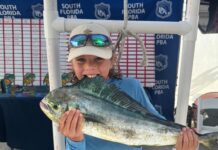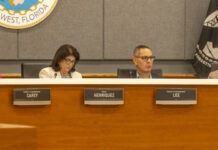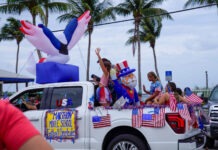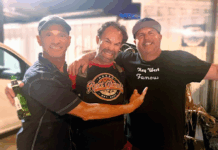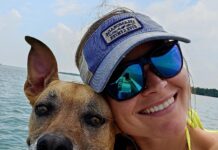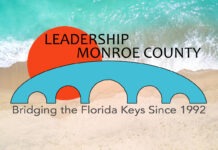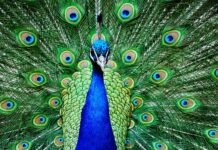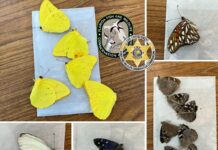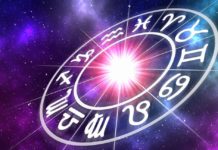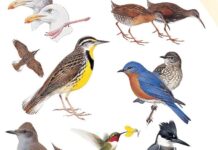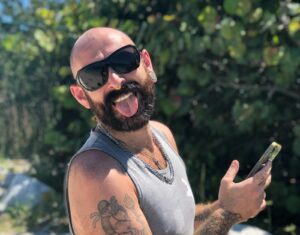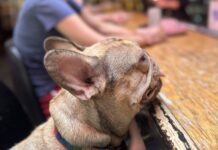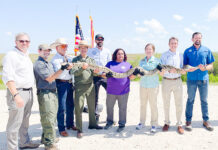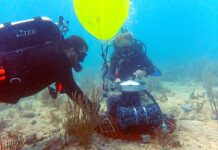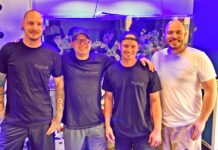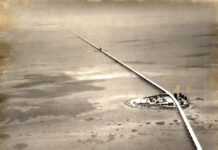
The Florida Keys started as something other than a refuge for art and artists. It seems safe to say that the island chain has overcome its initial shortcomings.
Writers, poets and painters are no strangers to the Keys; neither is the art they leave behind. The subject came to mind last week because I talked about two prominent local sculptures with Nicole Malanga at South Florida PBS.
Some of the most visible pieces of art decorating the island chain are sculptures. My favorite is the tremendous collection of not-so-hidden brass busts on display in the shadows of Mallory Square. It is called the Key West Memorial Sculpture Garden. Opened in 1997, it celebrates 36 pioneers who affected Key West’s tremendous history, with cast bronze busts and plaques highlighting their contribution to the island’s story.
The Southernmost Point is more of a monument than a sculpture. The concrete buoy painted with red, black, yellow and white stripes screams, “I’m on vacation in Key West!” For that reason, it is the most photographed object in the Florida Keys; the line of people waiting to have their picture taken in front of it forms at the corner of Whitehead and South Streets pretty early in the day and generally extends into the evening.
The second most popular place to stop and take pictures is over 85 miles up the Overseas Highway. Instead of posing with the buoy, people stop to stand in front of Betsy, the world’s largest anatomically correct Caribbean spiny lobster. The unique sculpture stands in the parking lot of the Rain Barrel, an artisan village in Islamorada’s Plantation Key. Marathon artist Richard Blaes took five years to create the 40-foot-long and 30-foot-high piece of art.
Tom Vellanti bought it. Vellanti owned a Plantation Key property known then as Treasure Village. The “village” was a collection of souvenir and artisan shops. The property’s showpiece was an unusual castle-like building. It was built to house Art McKee’s Museum of Sunken Treasure. Recognized as the father of modern treasure hunting, his museum was the first of its kind in the world.
Betsy was purchased and placed in front of Treasure Village so everyone driving up and down the Overseas Highway could see it. A large percentage of the people who saw Betsy pulled over, parked their cars and took a closer look. Some of that group decided to walk around and look at the shops. A percentage of that group opened their pocketbooks and spent some money, which was one reason Vellanti bought the big lobster and placed it like a roadside attraction.
When Treasure Village closed and transformed into the Treasure Village Montessori School, having a roadside attraction in front of a school did not seem like a good idea. Betsy was removed from the school grounds and placed into storage until she was relocated to her current resting place in the parking lot of The Rain Barrel — on the other side of the highway from the school. There, the sculpture continues to serve as an eye-catcher, drawing people off the road to stop and take a picture … and hopefully do a little shopping.
Another eye-catching sculpture draws a different kind of attention and is also harder to see. The 9-foot-tall Christ with his arms reaching up is a bronze casting of a statue sculpted by the Italian artist Guido Galletti. At least three bronze castings were commissioned. The first is found in the Mediterranean Sea, near Genoa, Italy. The second casting, the Bianca C Memorial Sculpture, overlooks St. George’s Harbor, Grenada. The third bronze casting found its way to the Florida Keys.
Egidio Cressi, co-founder of Cressi, the world’s oldest scuba diving equipment company, sponsored the third casting. When it was completed, Cressi donated the sculpture to the Underwater Society of America. While the society decided where the statue should go, it was stored at Chicago’s O’Hare International Airport. Florida’s U.S. Sen. Spessard Holland helped to successfully lobby to have the statue placed at the recently established John Pennekamp Coral Reef State Park.
The United States’ first underwater park (or mostly underwater) was dedicated as John Pennekamp Coral Reef State Park on Dec. 10, 1960. Originally called the Key Largo Coral Reef Preserve, Gov. LeRoy Collins renamed the park Pennekamp to honor one of its most ardent supporters. The park opened to the public in 1963, and an underwater sculpture at an underwater park was clearly seen as an appropriate fit.
When the sculpture arrived at Key Largo, it stood on the park’s shore for nearly two years. Only after the 9-foot-tall statue was fitted with a reinforced concrete base was it taken offshore. On August 25, 1965, the roughly 20,000-pound sculpture and base were lowered into the clear blue waters at Key Largo Dry Rocks for divers and snorkelers to enjoy. While often referred to as the Christ of the Abyss, when John Pennekamp dedicated the statue on June 29, 1966, its official name was the Christ of the Deep.
Because of where it stands, the statue has become encrusted with purple sea fans and other corals, like a 9-foot-tall artificial reef with its arms open wide. For those curious about the statue and who do not plan on getting their feet wet, a similar statue is located relatively close by. The Justin Martyr Catholic Church commissioned a bronze replica, and in 1991, the statue was installed in front of the church at MM 105.5.
